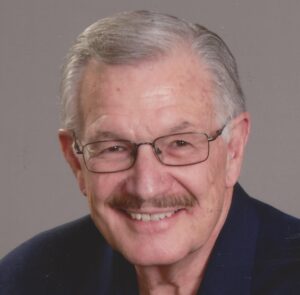As part of CEO Insights series, the Chief Executives Council recently interviewed Jim Treleaven, president and CEO of Via Strategy Group or VSG. Jim advises CEOs, boards of directors and other C-level executives on growth and turnaround strategies, M&A transactions, and serves interim c-level roles. Jim is a professor at the University of Illinois Chicago, the Department of Information and Decision Sciences, where he teaches courses in strategy, information systems and analytics. His successful career includes CEO roles at both public and private technology companies ranging in size from 40 million to 500 million, and most recently he was president and CEO of Catalyst International, a NASDAQ listed supply chain software company.
Strategy Group or VSG. Jim advises CEOs, boards of directors and other C-level executives on growth and turnaround strategies, M&A transactions, and serves interim c-level roles. Jim is a professor at the University of Illinois Chicago, the Department of Information and Decision Sciences, where he teaches courses in strategy, information systems and analytics. His successful career includes CEO roles at both public and private technology companies ranging in size from 40 million to 500 million, and most recently he was president and CEO of Catalyst International, a NASDAQ listed supply chain software company.
He also served as CEO of Global Commerce Zone and Visual Intelligence Corp. He served as managing partner at Battelle Venture Partners. Jim received his BS degree in computer engineering from Case Western Reserve University, an MBA from the University of Minnesota, and a PhD in Management Information Decision sciences from Case. Jim taught at Case and the University of Illinois and lectured at several other leading universities and has published extensively in journals on such topic as data analytics, information systems, corporate strategy, finance, and human computer interaction. He’s co-author of the book X-Formation: Transforming Business Through Interim Executive Leadership. He’s a frequent speaker on subjects ranging from AI and STEM education, to collegiate sports. He currently serves on the board of the Chicago Engineers Foundation as president, and he serves on advisory boards of three graduate business schools as well as our own Chief Executives Council. And he is on the boards of several private companies.
Following are questions from moderator Neil Brown, and answers from Jim Treleaven. If you are interested in learning more, view the full interview video archive here.
Q: Your early career was engineering; how did you transition from technology to CEO and board roles?
A: Well, like much of my career, it was partially by design and partially by accident. But I was working as an engineer designing computers, giant ones that would all be in museums now and did that for quite a while, while I was going to graduate school, first in engineering. Then I thought, “Well, I should switch to the business school and get an MBA,” Which I did. And that was the launch into the business world where I thought the combination of my engineering background and an MBA would be valuable in business. And generally, that’s turned out to be true. I often say, “I could not design anything anymore, but I do know enough to know when the technical people are BS-ing me,” Which turns out is a very valuable skill in a lot of these companies. I had been at IBM and ended up in a sales position at IBM.
And that was the transition and selling in the part of IBM that did consulting in analytics and database. I did that for a while and rose in the sales ranks a bit, to be VP of sales and marketing. And my boss went to a different company, and he was my mentor. That is when I was approached by an artificial intelligence startup out of MIT to become CEO. I was intrigued by that, but it turned out to be a turnaround. We got the company going and it turned out to be very successful and was acquired. So that was the transition. I’ve totally never left engineering, as I said, but I highly recommend it as a career start for anybody.
Q: What are the responsibilities of today’s CEO, and how do they differ for public vs. private companies?
A: Generally, the process of being the CEO for both, you’re responsible to the shareholders, whether they’re individual investors or they’re public shareholders. So, the reporting requirements are more for public companies, but responsibilities are the same. And I did mention customers and I will say, and I’ll mention it later too, that your most important stakeholder is your customer, your shareholders and investors will be happy if your customers are happy.
They’re not dramatically different between the two, and since both the public and the private companies were turnarounds, but it’s a little bit trickier for the private companies, generally have a pretty close relationship with the major investors. The last one I did in the last couple of years had a single very large investor, and that’s who you’re responsible to. In a public company, even though the last public company that I ran was relatively closely held, several large shareholders that bought in at the time it went public. I did know most of the major shareholders, but there are significant reporting requirements and responsibilities that go beyond that. You must be very careful about what you represent to the marketplace in terms of the performance of the company, where it is in relationship to its customers.
Q: Tell us about your advice that you would give others that aspire to achieve the CEO title or just to be a more effective CEO
- Be a really good listener that trust your employees and focus on your customers.
- Ask a lot of questions.
- Listen a lot and learn a lot.
To learn more, view the full interview here.


0 Comments